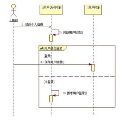The amount of sequencing data for SARS-CoV-2 is several orders of magnitude larger than any virus. This will continue to grow geometrically for SARS-CoV-2, and other viruses, as many countries heavily finance genomic surveillance efforts. Hence, we need methods for processing large amounts of sequence data to allow for effective yet timely decision-making. Such data will come from heterogeneous sources: aligned, unaligned, or even unassembled raw nucleotide or amino acid sequencing reads pertaining to the whole genome or regions (e.g., spike) of interest. In this work, we propose \emph{ViralVectors}, a compact feature vector generation from virome sequencing data that allows effective downstream analysis. Such generation is based on \emph{minimizers}, a type of lightweight "signature" of a sequence, used traditionally in assembly and read mapping -- to our knowledge, the first use minimizers in this way. We validate our approach on different types of sequencing data: (a) 2.5M SARS-CoV-2 spike sequences (to show scalability); (b) 3K Coronaviridae spike sequences (to show robustness to more genomic variability); and (c) 4K raw WGS reads sets taken from nasal-swab PCR tests (to show the ability to process unassembled reads). Our results show that ViralVectors outperforms current benchmarks in most classification and clustering tasks.
翻译:SARS-CoV-2的测序数据数量比其他任何病毒都大,这个量将随着许多国家积极投资基因组监测努力而呈几何级数增长。因此,我们需要一种处理大量序列数据的方法,以便进行有效但及时的决策。这些数据将来自于各种异质性来源:整体基因组或感兴趣区域(如刺突蛋白)的对齐、未对齐或甚至未组装的原始核苷酸或氨基酸测序读数。在这项工作中,我们提出了 ViralVectors,它是从 virome 测序数据中生成紧凑特征向量,可进行有效的下游分析。这种生成基于 minimizers,一种轻量级的序列“签名”,传统上用于装配和读取映射——据我们所知,这是首次将 minimizers 用于这种方式。我们使用不同类型的测序数据对我们的方法进行验证:(a)250 万份SARS-CoV-2刺突蛋白序列(以显示其可扩展性);(b)3K份冠状病毒科刺突蛋白序列(以显示其对更多基因组变异的稳健性);和(c)来自鼻拭子 PCR 检测的4K份原始全基因组测序读。我们的结果表明,ViralVectors 在大多数分类和聚类任务中优于当前的基准。

